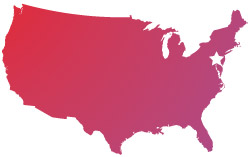More than Amish
Lancaster is widely known to be rich with history, Amish culture and plenty of tourist traffic. But are you familiar with these lesser-known facts about this colonial city and its namesake county?
- Lancaster County was carved out of Chester County in 1729 after citizens complained of "thieves, vagabonds, and ill people" who had infiltrated the western frontier. There's no word on whether the good people of Chester County still feel that way...
- Many Lancastrians played important roles in the founding of our country—from the battlefield to the legislature. George Ross, resident of East King Street and signer of the Declaration of Independence, introduced his niece Betsy to George Washington, and the rest, as they say, is history. Big-time, first-American-flag, textbook-type history. Go, Lancaster.
- Andrew Ellicott, a prominent surveyor who was a mentor to Captain Merriwether Lewis (of THE Lewis & Clark) lived on North Prince Street in a home that still stands to this day, just north of the parking garage, which is probably the most exciting thing about that parking garage.
- On September 27, 1777, Lancaster served as the nation's capital as the Continental Congress gathered in the courthouse for a hurried session. Because Lancaster was also serving as the state capital, it was decided that Congress should move across the Susquehanna to York, separating the two bodies in case British troops advanced on the town, with the additional benefit of ridding the town of excess politicians.
- Revolutionary War turncoat Benedict Arnold was married to the granddaughter of Lancaster resident Edward Shippen III, a wealthy merchant, former mayor of Philly, judge and founder of the town of Shippensburg, PA. And you thought your relationship with your in-laws was bad—imagine incurring the wrath of that dude. Shippen and much of his family are buried in the St. James Episcopal Cemetery on East Orange Street.
- Penn Square, at the intersection of King and Queen Streets, is home to the solemn Soldiers and Sailors Monument, a memorial to the Lancastrians who fought to save the Union during the Civil War. The site was originally occupied by the County Courthouse, a prominent vista overlooking a young and thriving market town.
- From the 1890s through the 1920s, Lancaster architect C. Emlen Urban designed buildings throughout the city in his trademark combination of the beaux-Arts, Queen Anne and Colonial Revival styles. His work includes the Griest Building, Southern Market, the Watt & Shand Department Store (now the Convention Center façade) and Roslyn—James Watt's private residence. Many of the city's school buildings also began life on Mr. Urban's drafting table.
- Lancaster's streets follow the early colonial fashion of being named for English royalty: King, Queen, Duke, Prince and Orange (yes, royalty—William IV, Prince of Orange); native trees: Walnut, Chestnut, Mulberry and Pine; tasty fruits: Lemon, Cherry, Lime, Plum and Strawberry; and local bigwigs: Shippen, Buchanan, Fulton and Reynolds.
- President James Buchanan and Congressman Thaddeus Stevens were political rivals on Capitol Hill but found time to put aside political differences for God—both were members of the First Presbyterian Church on Orange Street.
- Lancaster's first train station, built in 1834, could be found at the northeast corner of Queen and Chestnut, where the Federal Taphouse and a parking garage now stand (not to worry; that will be our final mention of a parking garage). Trains would enter the city at Harrisburg Avenue and Charlotte Street, traveling through what is now Linear Park. Hotels, saloons and market wagons greeted disembarking passengers.
- Many out-of-towners' conceptions of Lancaster are of a land teeming with descendants of the Amish and Mennonites who settled in the 18th and 19th centuries. But Lancaster's early days saw other immigrant populations, too. Notably: French Huguenots in the Paradise area, Scots-Irish Protestants in the South and West and Germans of all faiths throughout the region—notably those who founded the Ephrata Cloister religious community.

Sources: lancasterhistory.org; visithistoriclancaster.com; whitehouse.gov
||Tag: ||